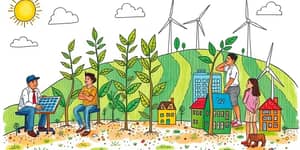
In the face of escalating climate challenges and rising energy costs, the real estate industry is undergoing a profound transformation. Green buildings have emerged at the forefront of this shift, combining environmental stewardship with economic promise.
From operational savings to enhanced occupant health, this sector’s ascent is nothing short of remarkable—ushering in what many experts call a new era of sustainable development.
As we explore the drivers, innovations, and impact of green construction, it becomes clear that these structures offer more than just improved efficiency—they represent a blueprint for resilient communities and a healthier planet.
Globally, the green building market soared to an estimated $565.33 billion in 2024. Projections show it climbing to $618.58 billion by 2025 and surpassing a staggering $1.37 trillion by 2034, reflecting a compound annual growth rate of around 9.4% over the next decade.
Residential segments play a pivotal role:
Regionally, Europe leads with a 39% share in 2024, driven by stringent carbon neutrality goals and regulations. Meanwhile, Asia-Pacific surges ahead amid rapid urbanization and renewable energy adoption, notably in China and India.
Several powerful factors are fueling this momentum across global markets:
Investors, too, are recognizing the long-term value of these assets. Green properties often command higher rents and experience stronger occupancy, backed by government incentives and a growing emphasis on environmental, social, and governance (ESG) criteria.
At the heart of the green building surge lie groundbreaking technologies and design philosophies:
Eco-landscaping and water-saving features further enhance resource efficiency, creating self-sustaining environments that thrive both inside and out.
Green labels provide a common language for builders, investors, and occupants to gauge performance. Key certifications include:
Despite higher upfront costs for green materials and technologies, savvy developers leverage incentives and grants to offset initial investments. Many report recouping up to 30% of construction expenses through tax credits and accelerated depreciation.
Navigating varied regional standards can be complex, but a strategic approach—partnering with local experts and adopting universal best practices—streamlines certification and ensures compliance.
The rewards are far-reaching:
Green buildings stand as a testament to human ingenuity and commitment to a sustainable future. By blending smart technologies, eco-friendly materials, and regulatory support, this sector is set to redefine real estate norms.
For developers, investors, and communities alike, the message is clear: embracing green building practices is not just an environmental imperative—it’s a strategic opportunity to unlock lasting value, resilience, and health.
As we move forward, the continued rise of this growth sector will serve as a powerful catalyst for global carbon reduction and inspire the next generation of sustainable infrastructure projects.
References













